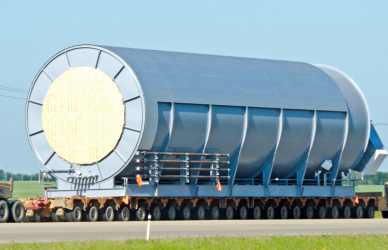Driving a big rig can be challenging enough, but when you add high altitudes to the mix, it can become even more challenging. Altitude affects truck performance in a variety of ways that every driver should be aware of before hitting the road. Below we’ll cover a few things you may you need to know about driving a truck in high altitudes.
Altitude and Semi-Truck Performance
The higher the altitude, the lower the air pressure. This means that there is less oxygen available for a combustion in the engine, which can affect the truck’s performance. Trucks may experience reduced power, slower acceleration, and a decrease in fuel efficiency at high altitudes. This is because the engine has to work harder to maintain the same level of power it would at lower altitudes.
Fuel Efficiency and Altitude for Semi-Trucks
As mentioned, the engine has to work harder to maintain the same level of power at high altitudes, which can lead to a decrease in fuel efficiency. Truck drivers should plan their routes accordingly and factor in the increased fuel consumption that comes with driving at high altitudes. It’s also important to regularly check the truck’s fuel levels and carry extra fuel if necessary.
Altitude and Semi-Truck Braking Systems
Truck braking systems can be affected by altitude as well. This is because the air pressure is lower at higher altitudes, which can affect the operation of the brakes. Semi-truck drivers should be aware of this and adjust their driving accordingly. It’s important to give yourself extra space when braking and to use lower gears to help slow down the truck.
Altitude-Related Truck Driving Hazards
Driving a truck at high altitudes can also present hazards that drivers should be aware of. For example, the road conditions can be more treacherous at higher altitudes, with steep grades and winding roads. Drivers should take their time and be cautious when driving in these conditions.
Here are some tips and best practices for driving a semi-truck in high altitudes:
- Plan your route carefully and factor in the increased fuel consumption that comes with driving at high altitudes.
- Carry extra fuel and keep a close eye on the fuel levels of your truck.
- Use lower gears to help slow down the truck when going downhill.
- Give yourself extra space when braking, as altitude can affect the operation of the brakes.
- Be aware of altitude-related hazards such as steep grades, winding roads, and adverse weather conditions.
- Take your time and be cautious when driving in these conditions.
- Monitor your truck’s engine performance, particularly if you notice a decrease in power or acceleration.
- Consider using an altitude compensation system, which can help maintain engine performance at high altitudes.
- Keep your tires properly inflated, as altitude can affect air pressure in the tires.
- Conduct regular maintenance checks on your truck to ensure that it’s in good condition and ready to tackle the challenges of high-altitude driving.
Driving a truck in high altitudes presents unique challenges that can impact the performance of the truck. To successfully navigate the roads at high altitudes, it’s important to be aware of altitude-related hazards, prepare your truck for the journey, and take the necessary precautions to ensure safe and efficient driving. With the right preparation and care, you can safely and successfully drive your truck in high-altitude terrain.











